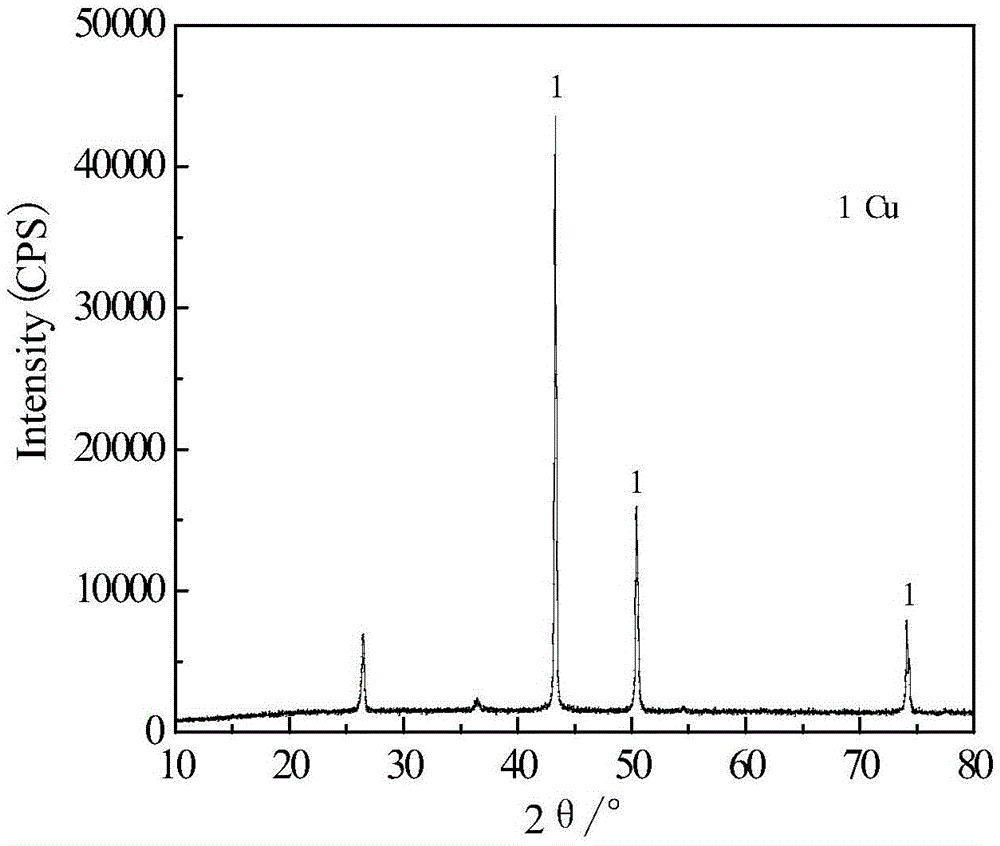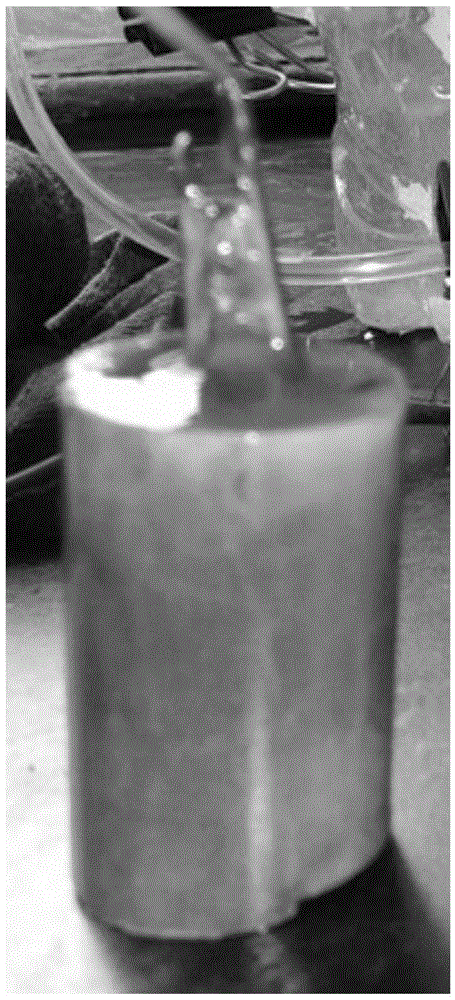Method for recovering elemental copper from copper-containing wastewater with microbial fuel cell
A fuel cell and microorganism technology, applied in the fields of biochemical fuel cells, biological water/sewage treatment, chemical instruments and methods, etc., can solve the problems of long start-up time and low copper recovery efficiency, achieve short start-up time, improve recovery efficiency, The effect of reducing the ohmic internal resistance
- Summary
- Abstract
- Description
- Claims
- Application Information
AI Technical Summary
Problems solved by technology
Method used
Image
Examples
Embodiment 1)
[0033] The method for reclaiming elemental copper from copper-containing waste water with microbial fuel cell of the present embodiment comprises the following steps:
[0034] ① Construct a double-chamber MFC reactor.
[0035] The MFC reactor used in this example includes a cathode chamber and an anode chamber with the same volume, and the material is polyethylene. 300mL~500mL (the effective volume in this example is 500mL); the two electrode compartments are separated by a pretreated proton exchange membrane (Nafion TM 212, DuPont). The anode chamber and the cathode chamber are respectively equipped with an anode and a cathode, and the MFC anode is a graphite rod with an effective surface area of 31cm 2 ; MFC cathode is a graphite rod with an effective surface area of 31cm 2 . The two pole chambers are connected with wires, and a variable resistance box of 10Ω~100Ω is connected between the two pole chambers (the resistance is set to 50Ω in this embodiment). The anode...
Embodiment 2)
[0054] The method for reclaiming elemental copper from copper-containing wastewater by microbial fuel cell of the present embodiment is the same as in Example 1, except that:
[0055] The COD value of the anode substrate in step ③ is 850mg / L.
[0056] The power generation performance of the MFC of the present embodiment is shown in Figure 4 , the maximum current density of MFC is 0.6 mA·m -2 . After running for 190 hours, take out the cathode, and use a brush to scrape the bronze-colored deposits on the cathode into the product collector.
[0057] The XRD diffraction pattern of present embodiment cathode deposit sees Figure 5 According to the detection method of Example 1, sharp diffraction peaks appear in the cathode deposit diffraction pattern at 2θ of 43.9°, 50.4° and 73.6°, which are consistent with the characteristic peaks of elemental copper through computer retrieval; and the characteristics of cuprous oxide do not appear Peaks 36.4°, 43.2° and 61.4° and Cu 4 (OH...
PUM
| Property | Measurement | Unit |
|---|---|---|
| chemical oxygen demand (mass) | aaaaa | aaaaa |
| chemical oxygen demand (mass) | aaaaa | aaaaa |
| volume | aaaaa | aaaaa |
Abstract
Description
Claims
Application Information
 Login to View More
Login to View More - R&D
- Intellectual Property
- Life Sciences
- Materials
- Tech Scout
- Unparalleled Data Quality
- Higher Quality Content
- 60% Fewer Hallucinations
Browse by: Latest US Patents, China's latest patents, Technical Efficacy Thesaurus, Application Domain, Technology Topic, Popular Technical Reports.
© 2025 PatSnap. All rights reserved.Legal|Privacy policy|Modern Slavery Act Transparency Statement|Sitemap|About US| Contact US: help@patsnap.com



